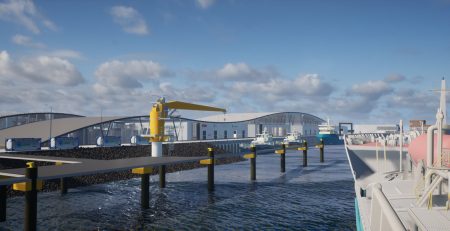RWE, Shell, Gasunie and Equinor sign memorandum of understanding
Essen/ Hamburg/ Hannover/ Berlin – The project partners RWE, Shell, Gasunie and Equinor have signed a memorandum of understanding to strengthen their cooperation in the AquaSector project. This involves the vision of the first large-scale German offshore hydrogen park. The project will demonstrate that in Germany, hydrogen production at sea is an efficient, cost-effective and sustainable option for the production of green hydrogen.
AquaSector plans to install approximately 300 megawatts (MW) of electrolyzer capacity to produce up to 20,000 tons of green hydrogen per year offshore. The green hydrogen is to be transported to Helgoland from 2028 via a transport pipeline called AquaDuctus.
The partners also see the AquaSector project as a “proof of concept” for realizing the AquaVentus vision of installing up to 10 gigawatts of electrolysis capacity by 2035 and transporting the green hydrogen produced to mainland Germany via an expanded pipeline.
Compared to transporting generated electricity, producing hydrogen at sea and transporting it via a pipeline can offer significant economic advantages. The pipeline can replace five high-voltage direct current transmission (HVDC) power links that would otherwise need to be built. The transmission line is by far the most cost-effective option for transporting large amounts of energy.
As part of the AquaVentus project family, the partners want to contribute to the decarbonization of the energy supply in Germany and Europe. AquaSector is thus set to become an important milestone in the implementation of the German and European hydrogen strategy.
The project can support the development of a hydrogen market that will bring a rapidly increasing demand for green hydrogen. The first step in the AquaSector project is to conduct a detailed feasibility study. The study will provide important information on the conditions under which the offshore hydrogen park can be successfully realized and the technical and economic challenges to be overcome in offshore hydrogen production.
About AquaVentus
The project family around the AquaVentus initiative includes numerous sub-projects along the value chain from the production of hydrogen in the North Sea to its transport to customers on the mainland. These coordinated consortia synchronize demand and generation, enabling a rapid market ramp-up. The AquaVentus project family includes, for example: the development of offshore wind turbines with integrated hydrogen production (AquaPrimus), a large-scale offshore hydrogen park (AquaSector), a central offtake pipeline (AquaDuctus), port infrastructures and transport chains (AquaPortus), maritime hydrogen-based applications (AquaNavis), and a research platform (AquaCampus).








